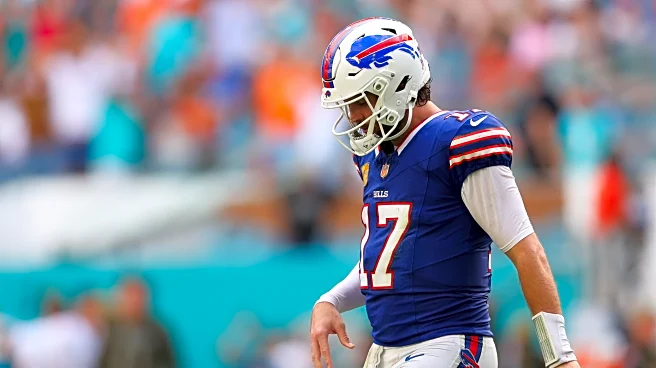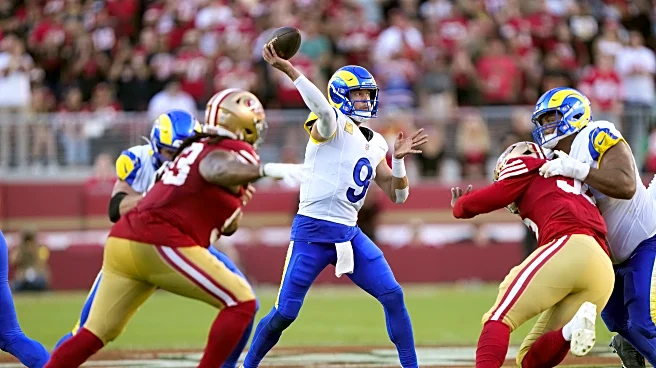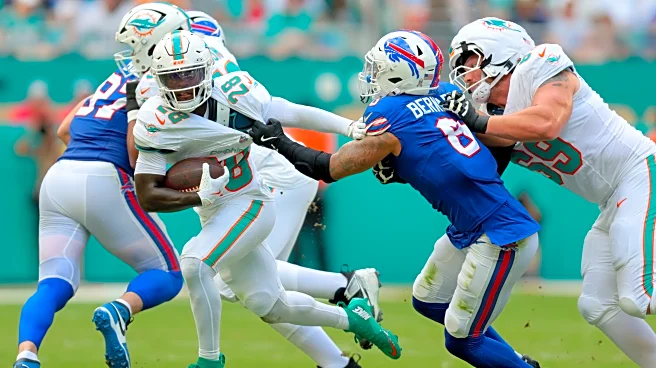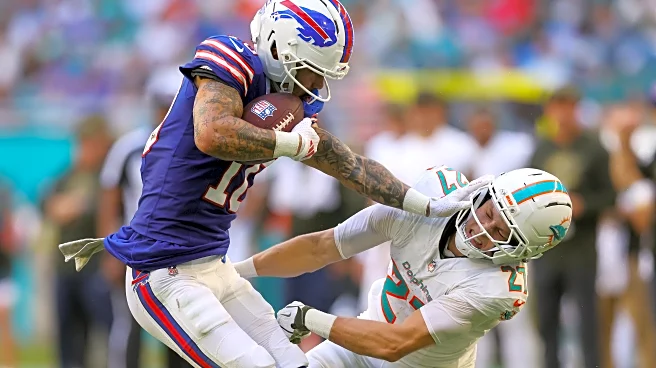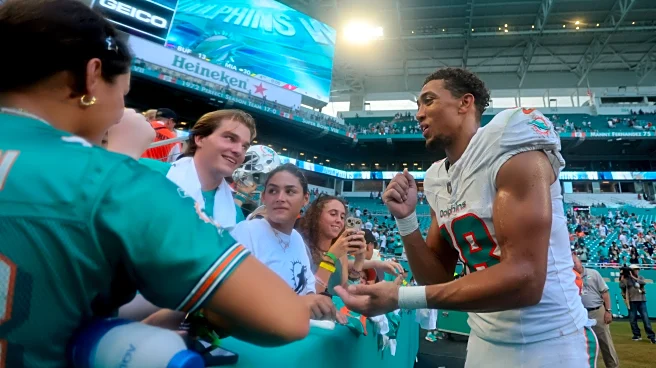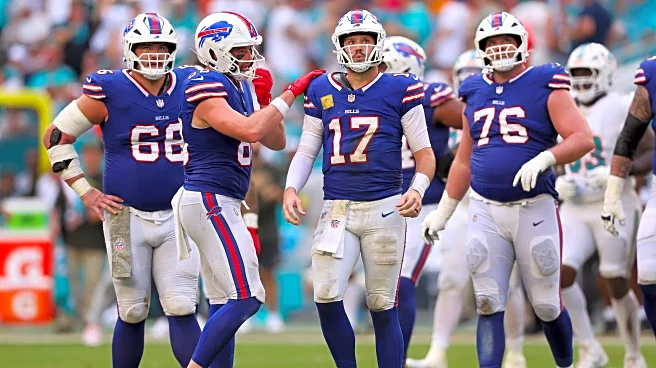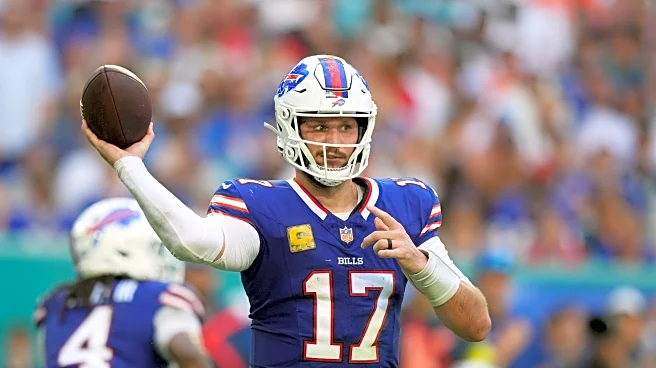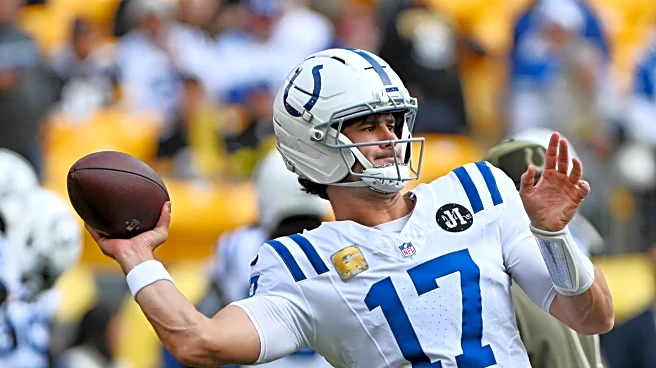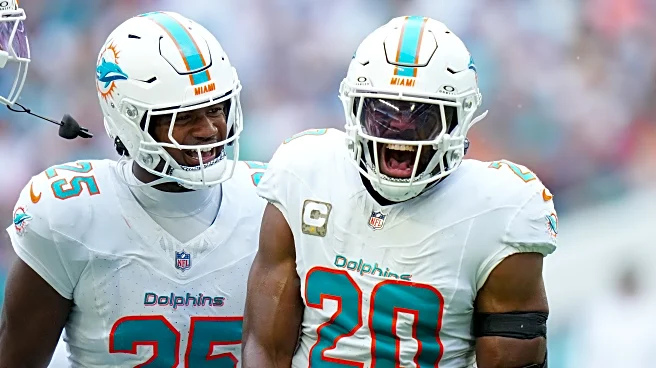The Buffalo Bills’ 30-13 loss to the Miami Dolphins was a stark reminder that even division dominance isn’t guaranteed. What was supposed to be a routine bounce-back after a promising win over the Kansas
City Chiefs turned into an offensive sputter and ended with a defensive collapse, allowing Miami to snap a seven-game losing streak against Buffalo.
The Dolphins racked up 197 rushing yards — led by De’Von Achane’s explosive 174 yards and two scores on the ground — while exploiting the Bills’ secondary and run defense. Quarterback Josh Allen threw for 306 yards and two touchdowns, but he was marred by a critical endzone interception and a fumble, contributing to three turnovers overall.
This loss drops the Bills to 6-3, two games behind the New England Patriots in the battle for the AFC East, and now fighting for a Wild Card spot in the AFC playoff picture. As Buffalo licks its wounds ahead of a home date with the Tampa Bay Buccaneers, it’s time to dissect the individual performances.
Who stepped up in the face of adversity, and who contributed heavily to the meltdown? Here’s my breakdown of the top three Bills trending up, the top three trending down, backed by key stats and advanced metrics from Pro Football Focus (PFF) and Next Gen Stats (NGS). I’ll also highlight honorable mentions, as usual.
Top 3 Bills trending up: Shining in the darkness
Even in defeat, some Bills showed flashes of talent, providing bright spots in a forgettable afternoon.
1. WR Khalil Shakir – The reliable safety valve

Shakir continues to be Allen’s most dependable target, hauling in seven receptions on nine targets for 58 yards, leading Buffalo in catches, yards, and targets on a day when the offense sputtered for 90 yards in the first half. His 77.8% catch rate showed why he’s one of the few receivers Josh actually trusts, and he generated 3.8 yards after catch (YAC) per reception — second among Bills pass catchers.
Advanced metrics highlight Shakir’s upward trajectory: His 75.2 PFF receiving grade was strong, with an 89.4 NGS passer rating when targeted (top-10 for slot receivers with 30-plus targets this season). Shakir’s YAC kept drives alive, converting two of the three third downs he was involved in. As the Bills’ wide receiver corps continues to underwhelm, the former Boise State product’s consistency (now 45 catches, 554 yards on the year) positions him as the de facto WR1, especially with wide receiver Keon Coleman’s lack of dependability.
2. CB Maxwell Hairston – opportunistic in coverage

Rookie cornerback Maxwell Hairston, starting and playing the majority of snaps for the first time in cornerback Christian Benford’s absence, snagged his second interception in as many weeks — a pick on quarterback Tua Tagovailoa’s deep shot to wide receiver Jaylen Waddle in the fourth quarter. He finished with four tackles, one pass defended, and, per Next Gen Stats, he held Waddle to just three receptions, 69 yards, and one touchdown, while covering him on 13 of his 18 routes. He got beat on a double move for a touchdown but showcased his speed to recover and almost make a play on the ball, and he kept the star receiver in check after it.
Hairston’s 82.1 PFF coverage grade was elite, with a 1.2% completion rate over expected (CROE) per NGS — meaning he turned winnable throws into incompletions or picks. His 4.8% missed tackle rate was the lowest on the Bills’ defense. With the secondary decimated by injuries, Hairston’s ball skills make him a potential game-changer at the cornerback position, boosting the Bills’ pass defense.
3. S Cole Bishop – The enforcer in the backfield

Bishop’s early interception on Tagovailoa’s lofted pass to Waddle set a tone for potential takeaways, and he finished with seven tackles (6 solo), one interception, and a pass defended. He graded out at 76.3 with PFF overall, with 2.1 stops (tackles resulting in immediate stops, per NGS).
His 89.2 PFF run-defense grade highlighted his impact, as he stuffed Achane twice for no gain on third downs, contributing to Miami’s lone three-and-out. Bishop’s 8.4% big-play stop rate ranks top-10 among safeties, a metric that measures tackles preventing five-plus-yard gains.
In a game where the front seven was gashed for 197 rush yards, Bishop’s sideline-to-sideline range (averaging 12.1 yards per tackle) provided the only consistent resistance, solidifying his role as a centerpiece in the Bills’ defensive backfield.
Top 3 Bills trending down: main issues in collapse
The loss exposed vulnerabilities on all levels, and these men’s struggles amplified the Bills’ woes, from schematic miscues to execution errors.
1. OC Joe Brady – schematic stagnation

Brady’s play-calling regressed into predictability, with the Bills running on 62% of first downs (league-high for the week, per NGS), leading to just 3.2 yards per carry and three three-and-outs. On 2nd & Long (7-plus yards), Buffalo went empty backfield and pass-heavy on 78% of snaps, but Allen’s 45.6% completion rate under blitz reflected stalled drives. The offense’s 18% play-action usage was a season-low, down from 28% in Weeks 1-9, forcing Allen into a game-manager role with 12 checkdowns (30% of attempts, highest since Week 5).
Brady’s run-centric build (Bills rank third in rushing success rate season-long, but 28th in EPA on first-down runs vs. Miami) sidelined Allen’s dual-threat, yielding a 98.5 passer rating but -1.8% CPOE and a 28.7 ESPN QBR. Wide receivers like Curtis Samuel (15 catches, 115 yards in nine games; 62 catches, 613 yards in 17 with Washington in 2023) and Elijah Moore (eight catches, 115 yards; 61 catches, 538 yards with Cleveland in 2024) have regressed, with the receivers group combining for a 68.2 PFF grade — failing to maximize skill sets amid heavy formations (12 personnel on 41% of snaps). Brady’s conservative tendencies (offense 22nd in neutral-script pass rate) ask Allen to be a checkdown merchant or suffer the consequences, and it stalled an MVP-caliber arm into a 3-of-12 third-down outing.
2. Offensive Line – pass-pro peril

The Bills’ offensive line crumbled, allowing nine pressures and three sacks on Allen’s 40 dropbacks — a 22.5% pressure rate, their worst since Week 1 (per NGS). Left tackle Dion Dawkins surrendered two sacks and five pressures (18.5% rate, 54.1 PFF pass-block grade). Left guard David Edwards yielded two pressures and a run-stuff (52.8 PFF overall, with 48.3 in pass pro). Center Connor McGovern allowed one sack and three pressures (51.9 PFF pass-block grade, down from his season 70.7 overall). Right tackle Spencer Brown gave up three pressures and a sack (15.2% rate, 58.7 PFF). Right guard O’Cyrus Torrence permitted two pressures plus a run-stuff (62.4 overall grade, down from 71.2 in run blocking). The unit’s 55.3 collective PFF pass-block efficiency ranked 29th for the week, as they also struggled with lack of physicality in the run game, against stacked boxes (3.9 YPC).
Amid poor and predictable play-calling from Brady, the offensive line’s regression (from 88.1 season efficiency to 72.4 vs. Dolphins) struggled to establish the run game, and exposed Allen to Miami’s rush (Chubb: 1.5 sacks), contributing to hurried throws, three turnovers, and a 3-of-12 third-down clip — making me question if they are closer to elite status or a vulnerable unit highly dependent on their star quarterback and running back James Cook III.
3. QB Josh Allen – hero to harried

Allen posted 306 passing yards and two touchdowns, but his two turnovers — a strip-sack fumble by Brooks and an end zone pick by cornerback Ifeatu Melifonwu — were back-breakers, stalling drives at the Miami five-yard line and killing a potential comeback. He was sacked three times, scrambling for 31 yards on four rushes.
Pro Football Focus gave him a 68.2 passing grade, citing poor decision-making under pressure (45.6% adjusted completion rate when blitzed). Next Gen Stats showed a 98.5 passer rating but a -1.8% completion percentage over expected (CPOE), his worst against Miami since 2022. The MVP front-runner’s 7.2% turnover-worthy play rate this season spiked to 12.5% here (now five INTs, five fumbles on the year), and without a run threat (Bills rushed 22 times for 86 yards), he couldn’t “put the Superman cape on” and elevate a wide receivers group that dropped 3-of-12 contested catches.
With that said, Allen is far from being at the top of the list when we look at this team’s issues. After all, if there’s something that’s proven, it’s his level of play and his status as one of, if not the best QB in the game. Now, with what has been done to this offense, taking the ball away from his hands on early downs and then asking him to fix the problems when it doesn’t work, and even worse, doing so without resources in the passing game, he can’t stay quiet and support this approach — and the people behind it — behind closed doors.
I get his interviews and what he tells the media — his teammates, coaches, and general manager Brandon Beane certainly appreciate how he protects them there — but at some point, as the Franchise QB and as a competitor, Allen’s got to demand more from everybody in the building. Otherwise, their shortcomings will continue to spatter on him and his performances and make it impossible — even for “Superman” — to cover for their flaws and win despite them.
Honorable Mentions
Trending Up:
- TE Jackson Hawes (26-yard TD grab; 74.1 PFF grade, can survive the position’s required physicality and stay healthy)
- DE Joey Bosa (4 tackles, 2 TFL, 3 pressures on 28 snaps; 4 sacks, 4 forced fumbles on season, tying for NFL lead)
Trending Down:
- RB James Cook (13 carries for 53 yards, 5 receptions for 24 yards on 18 touches, 3.9 YPC, -2.1% YOE, fumble on 4th-and-1)
- WR Keon Coleman (3 catches for 46 yards on 8 targets, 35-yard TD; lacking effort on several routes, drawing visible frustration from HC McDermott and QB Allen postgame)
- KR Brandon Codrington (healthy scratch; Bills’ return game awful at 8.2 yards per punt return and 22.1 per kickoff — 31st and 28th in NFL — roster spot in jeopardy with Mecole Hardman signing to practice squad)
Final Thoughts
This loss stings, but it’s could serve as another midseason gut check for a Bills team with Super Bowl aspirations. Allen’s arm talent and the run game’s explosiveness remain elite, but schematic tweaks — more play-action and better play calling — are imperative. With a winnable schedule ahead (Tampa Bay Buccaneers, Houston Texans, New York Jets), Buffalo can rebound.
But if the run defense doesn’t stiffen (28th in yards allowed at 141.4 YPG), and the injury bug continues, paired with some very questionable roster building and philosophy changes on the offensive side of the ball, this can be the year where the path to the playoffs gets tricky. Bills Mafia, stay tuned, Week 11 looms large.
Catch up on all this and more with the latest edition of Leading the Charge!
